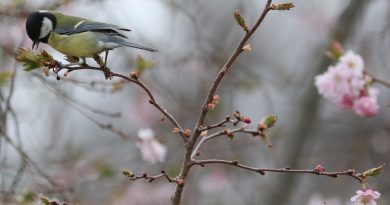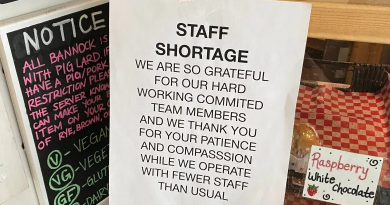This Alaskan spice shop brings new flavors to Indigenous dishes
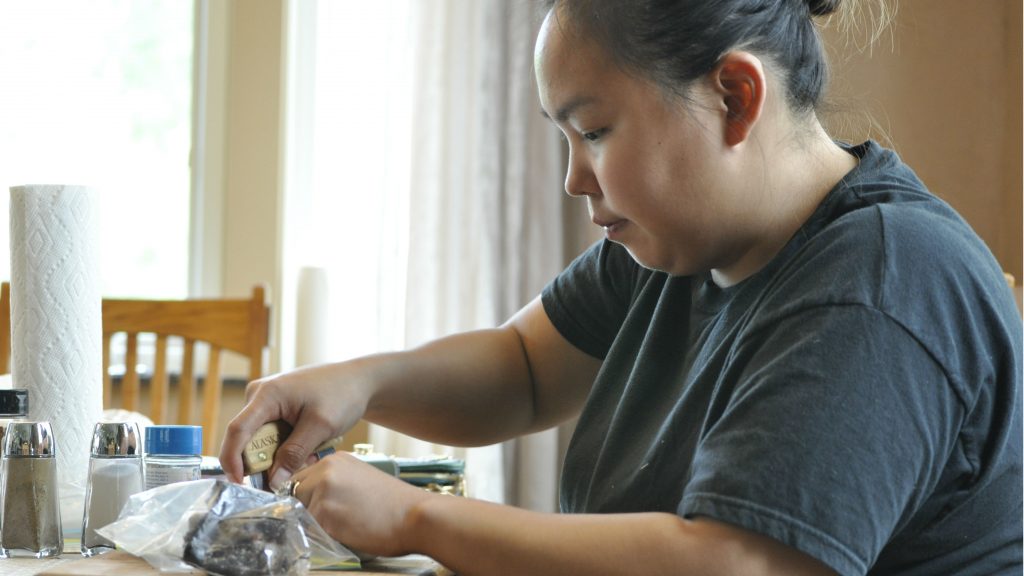
Alesha Tangman uses an ulu to cut a dark red piece of bowhead whale meat into small cubes at her aunt and uncle’s kitchen table in Wasilla, southcentral Alaska. It’s a marine mammal, but it smells like fresh fish.
She snacks on a plate of light pink tail meat–known as aqikkaq or the flukes– and then passes it around the table to her family members. It tastes like sushi.
“Well, I grew up on Native food because coming from the village everything at the store was so expensive, so we relied on caribou and whale and geese,” she said.
Tangman moved to Big Lake about five years ago from Nuiqsut (northern Alaska), but her relatives and friends bring her Native foods when they visit from the North Slope. She said she wants her three-year-old daughter to grow up loving the foods, unlike her nephews.
“Now they’re older, they haven’t had it since they were babies, and now they don’t like it,” she said.
Spices to improve traditional dishes
Hopefully, that won’t happen with her daughter, thanks in part to a local spice blend company run by a woman from the North Slope. Kunniak’s Spices is doing more than building bank accounts–it’s also connecting people with Native dishes in new ways.
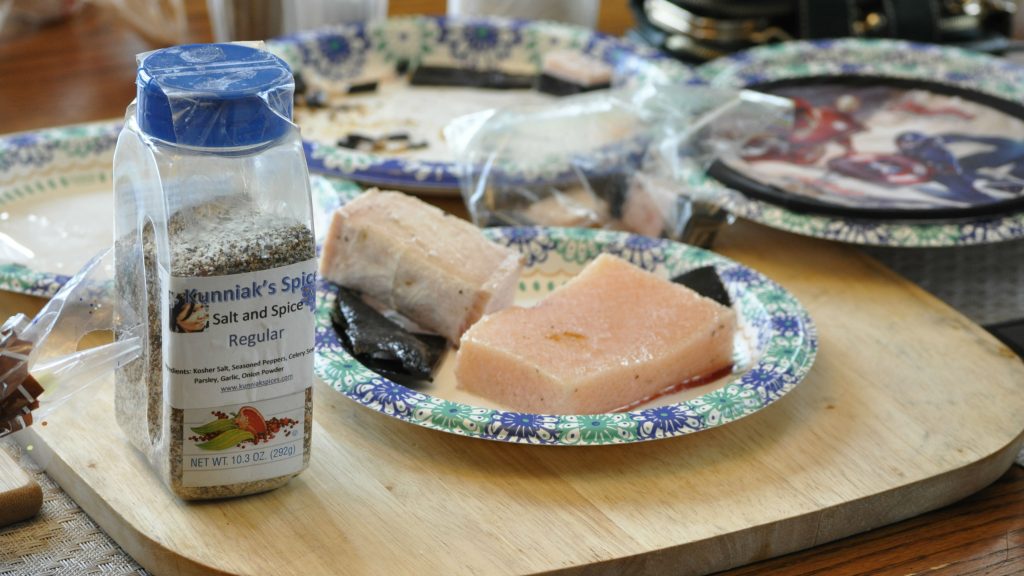
Tangman used to eat many of the dishes she grew up with plain or with salt. When she saw her friends talking about the company on Facebook, Tangman added herself to the company’s group page and then she won a sample.
“I used it on everything up there, even on salads and then in soups and then with eating Native food, it tasted even better,” she said.
She said she shares pictures on the page to show how much she enjoys the dishes, and is happy that she can support a Native-owned business owned by someone from the same region.
Turning a home recipe into a thriving business
The company’s owner, Kunniak Hopson, moved to Chugiak (southcentral Alaska) 11 years ago from Utqiaġvik, which she calls Barrow (Alaskan Arctic). When she was growing up, her family always put McCormick’s Salt ‘n Spice on Maktak, which is frozen whale blubber and skin. But then McCormick’s stopped making it, and she had to find an alternative.

“They kind of put their recipe online. And well I took it from there and altered it just a little bit, you know, just to make it mine, so I don’t get in trouble,” Hopson said.
At first, she was just making it for herself, but then her sister shared some with friends. Before Hopson knew it, people from other parts of the state were asking for the blend. She didn’t have any business experience, but she taught herself Quickbooks and got a food workers card.
“And from there, I started my own whole line of spices, which I now have 11 different flavors,” she said.
Metal shelves stuffed with bulk spices line the walls of Hopson’s kitchen. Flavors range from lemon to garlic to ghost pepper. Hopson stands at the head of a sturdy wooden table, where she mixes spices and fills clear plastic containers decorated with forget-me-nots. She ships 300 to 500 bottles of spices a month to customers across rural Alaska and to Canada. She fills them all with help from her daughters.
Hopson’s Facebook group has more than 1,300 followers. People post pictures daily, mostly of Alaska Native dishes that they’ve paired with her spice blends. Business has nearly quadrupled in the last six months, she said, mostly because people share the page with friends and family, and she hosts giveaways. For now, the business primarily lives on Facebook. She said she doesn’t have any plans yet to sell to restaurants or in stores, though she’s open to the idea if the business keeps growing.
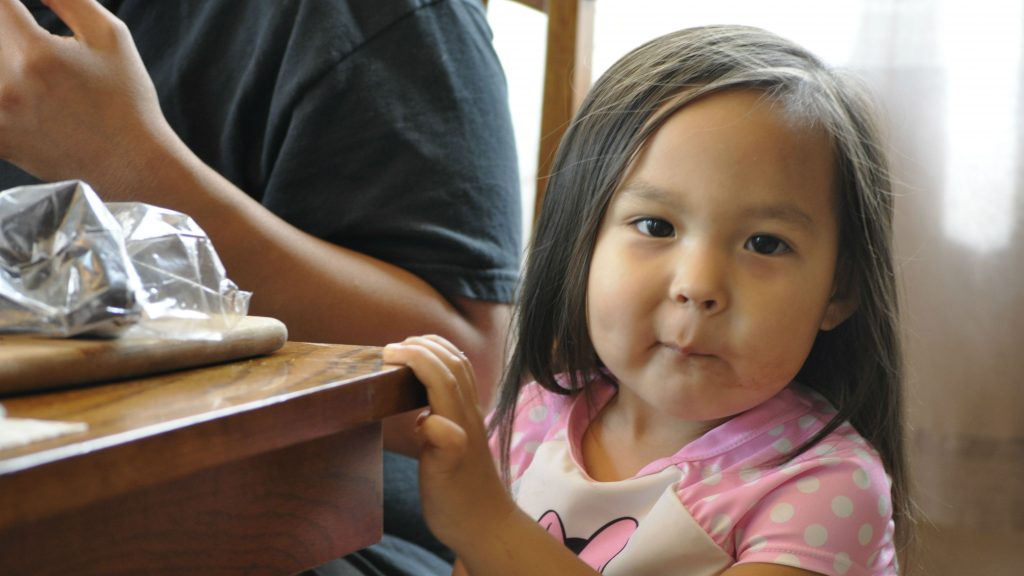
Hard work pays off
Hopson works a full-time job but sometimes spends five hours a day on the side business. The hard work has paid off. The business has funded trips back home, most recently to sell her spices at the Inuit Circumpolar Council general assembly meeting.
“There’s a lot of people that I have no idea who they are, they come up to me and say ‘hi’ and tell me that they’re one of my customers, and so it feels really good. It feels almost like a celebrity, almost,” she said.
The best part, she said, is hearing how much people enjoy them, especially their kids.
Like Tangman’s daughter, Lucy. She darts in and out of the kitchen, stealing bites of Maktak dipped in Kunniak’s Salt and Spice blend, her favorite.
“So we eat it together,” Tangman said. “She’ll choose this over chips or junk food.”
Finally, Lucy grabs an entire plate full of ruby chunks and takes it in front of the television, licking the salt and spice off her fingers after each bite.
Related stories from around the North:
Canada: Study in Northern Quebec to assess impact of climate change on Inuit’s food, CBC News
China: Arctic Indigenous food culture takes the day at international cookbook awards, Eye on the Arctic
Finland: Finland’s strawberry season hastened by warm spring weather, Yle News
Norway: Norway serves the world 36 million meals of seafood every day, The Independent Barents Observer
Sweden: Indoor agriculture thriving in Stockholm thanks to better LEDs, Radio Sweden
United States: How small investments are improving an Alaska community, Alaska Public Media


